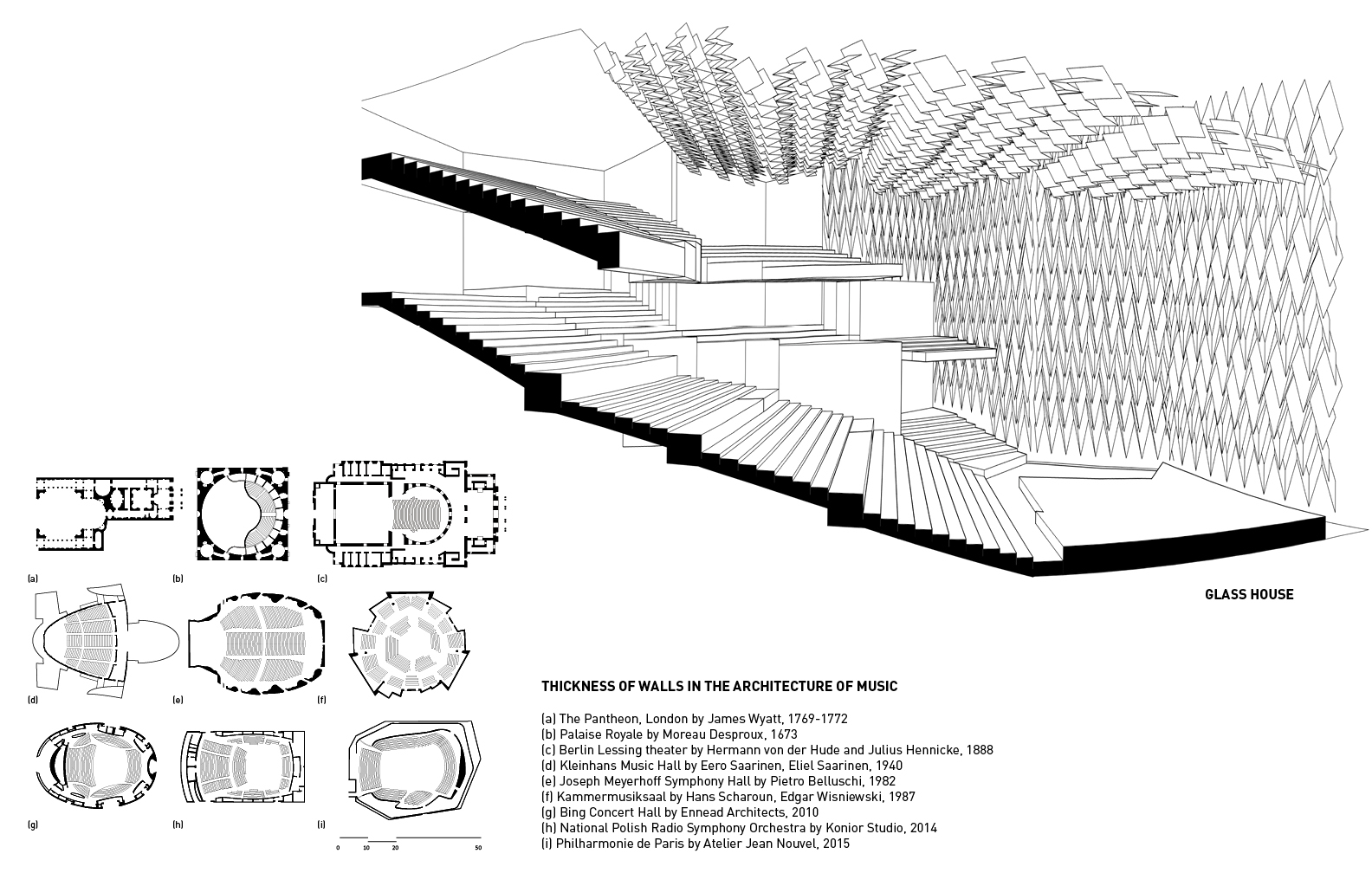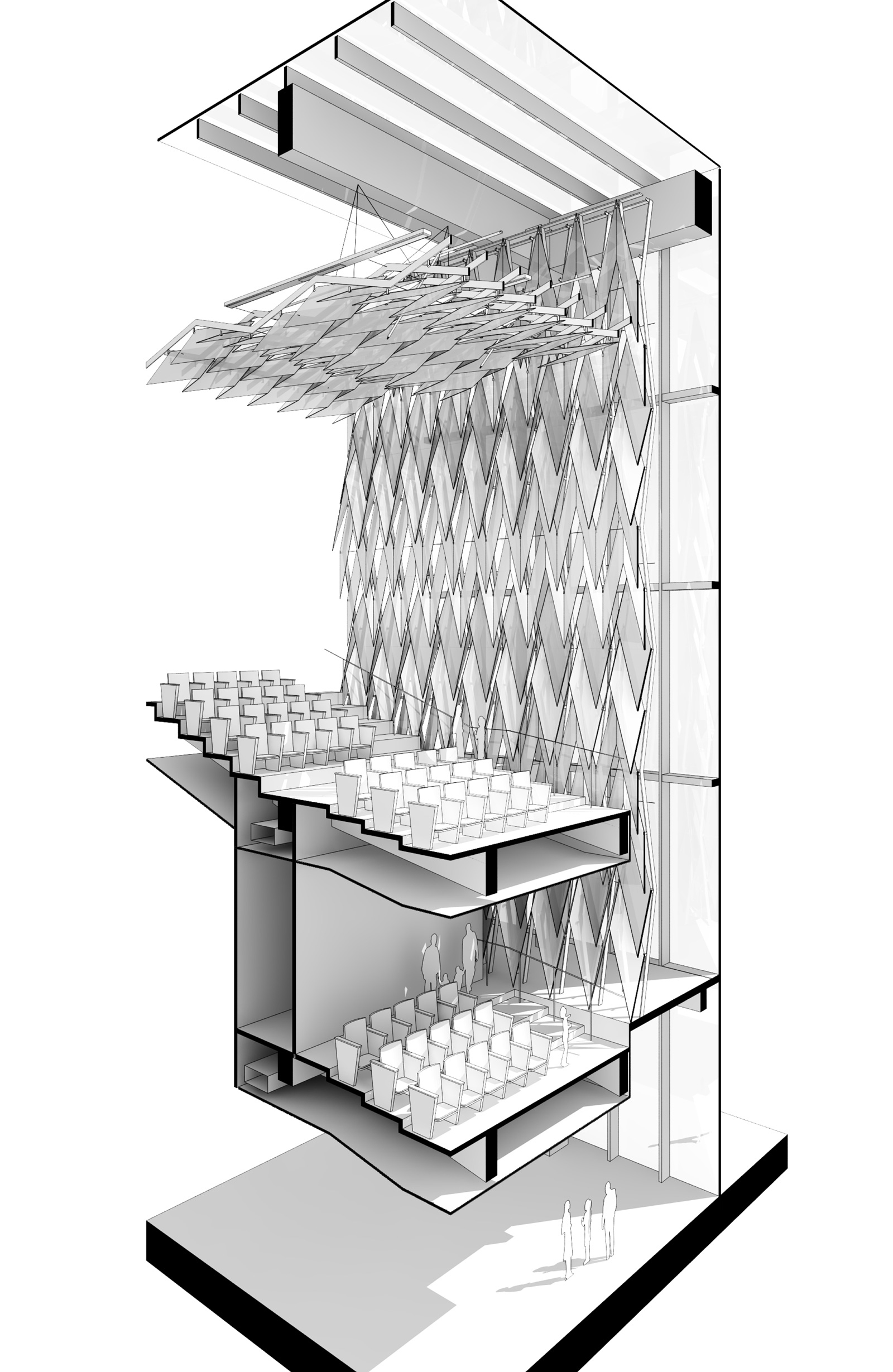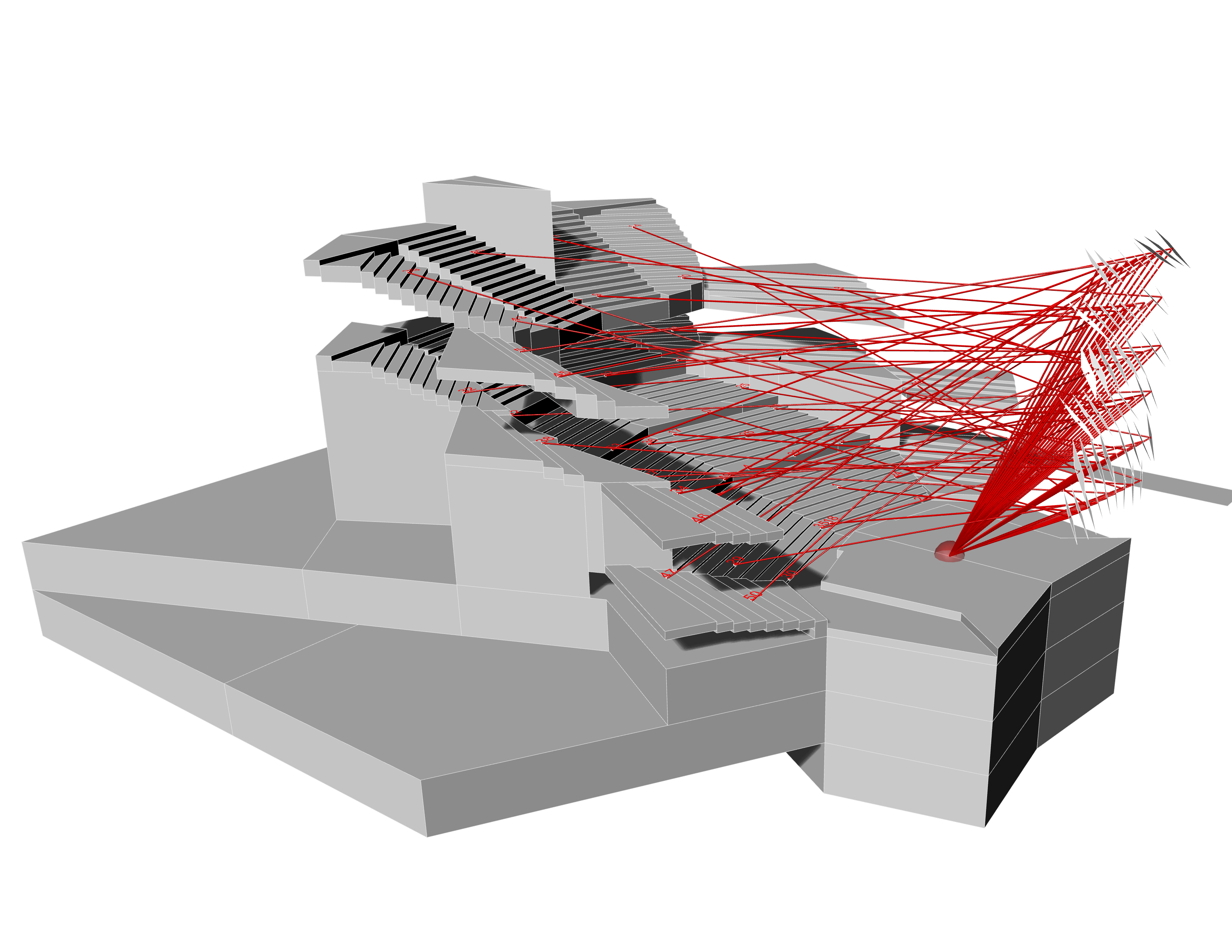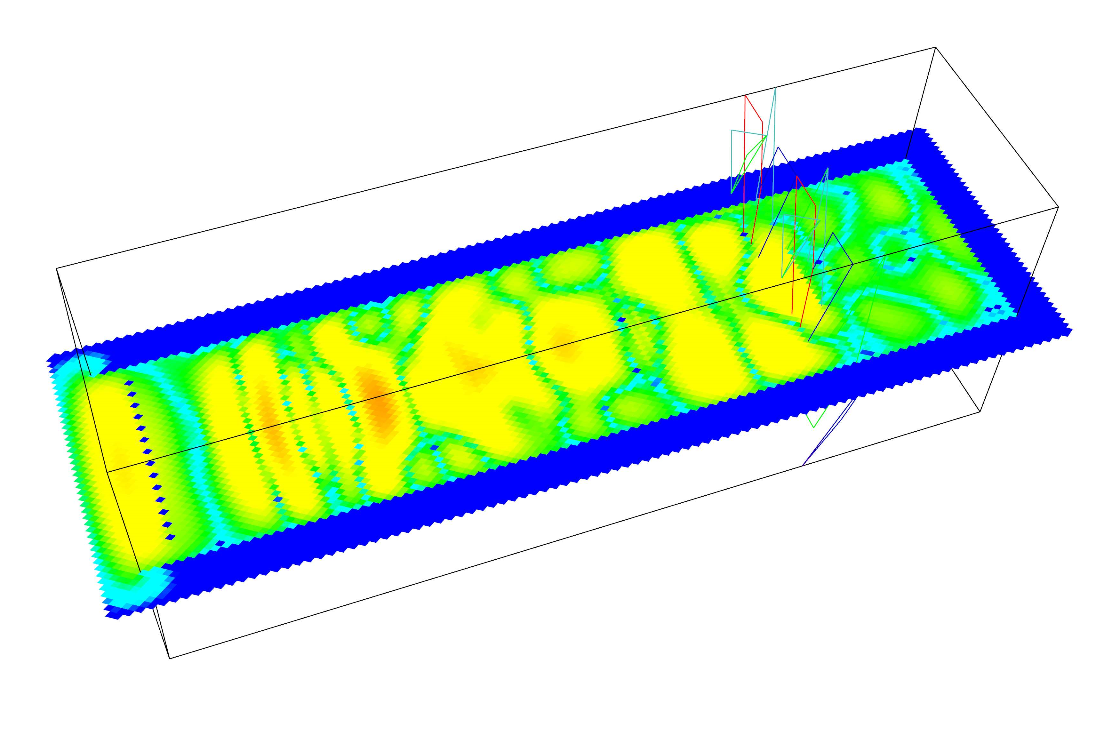Research paper: GLASS HOUSE FOR MUSIC


Event, Performance and Interaction in the city
Designing a space for music has been very much focused on the engineering of the sound. Modern knowledge of reflection, absorption, reverberation has been applied to the technique of reflecting panels, geometry of walls and absorption ability. However, the technologies of recording and speaker also have developed dramatically and we can get as good quality of music from the recording as you are in the concert hall in front of the orchestra. We no longer go to the music center only to get the best music quality. It is an event for diverse people and heterogeneous desire. Therefore, the engineering oriented auditorium design outlined by thick opaque walls must be changed toward the event space, toward true performance and interaction with the city.
 Glass Auditorium
Glass AuditoriumIn this mission, Glass House suggests transparent music center where pedestrian can see all performance from the street. Audiences inside viewing the stage also possess the view of the city as background of the concert, the city as the second stage.
Fragmented Glass Panels for Sound Engineering
The Glass panels are designed to efficiently distribute the sound to every audience. The fragmented glass wall is inspired by Herringbone pattern to control the angle of reflections, which also allows controlled penetration and absorption through the reveals between panels. This special house of music will provide very unique, crisp and accurate delivery of music.




Pachyderm Acoustic Simulation
Team:
Jin Young Song (Principal designer)
Arthur van der Harten (Acoustic consultant, Acoustic Distinctions || Pachyderm)
Paul Battaglia (Acoustic consultant)
Hashim Ajlouni